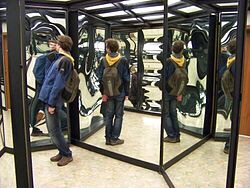Your cart is currently empty!

Addressing Symptoms: The Birth of the Delusional System and Bizarre Thoughts (Fixed & Solvent)
Delusions put the crazy in madness and mental health disorders. This means, simply, when we think he or she is “out there” and “nuts” it’s delusional systems that we are referring to within a persons larger set of symptoms. Delusions carve out the imaginary and marries it with our orientation in various ways that complicate…
Delusions put the crazy in madness and mental health disorders. This means, simply, when we think he or she is “out there” and “nuts” it’s delusional systems that we are referring to within a persons larger set of symptoms. Delusions carve out the imaginary and marries it with our orientation in various ways that complicate and distort our reality and sense of self.
When we say someone is delusional, clinically, we mean someone’s ideas and beliefs they hold about their world are more than just unusual, they are a departure from reality: meaning, what’s happening internally isn’t congruent with the external world.
Usually, with most mental health disorders featuring psychosis, delusions are more abundant than one disordered thought in complete isolation. Delusional systems are either fixed or solvent. This means that no matter how a persons recovery progresses and how that means external world changes, the delusion persists. This post targets how delusional systems are born and evolve in the person experiencing an altered realty and what the implications are for practice, & treatment.
- The Birth of the Delusional System: Fixed & Solvent
When a delusional system is born, it isn’t yet complex. In fact, it may be as simple and benign as a newly formed idea or routinely repeated habit executed internally by a person trying to complete their ADL’s or go to school or work. For example, a person might be cleaning wax from their ears when a switch flips internally the brain and slowly, and seemingly organically, the thought transforms.
All of the sudden, and conversely overtime, the person cleaning is no longer purpose removing wax he or she is doing something much different and likely more malignant in design than when the idea was first executed by the brain.
In my own experience, when I first experienced the birth of a delusion it was my relationship status with a friend, and ultimately, my marital status. At one moment I knew myself as single, and overtime, and yet suddenly, I knew of myself as married with a kid on its way depending on the health of my friends womb and a piece of fruit on my windowsill I connected to the health of her uterus. This is an example of how one distorted thought can evolve into a complex system with both fixed and solvent features.
- Implications for Treatment
The manner in which a delusional system forms directly informs how it is to be devolved and taken apart by clinicians treating the person with altered realities. Since delusional systems develop overtime and are realized suddenly by the person experiencing the change in their external world the clinician must identify the where and when the “break” or shift occurred and what that meant for person experiencing the shift in their realities.
For example, if a person overtime thinks there is a microchip implanted in their brain, the clinician must identify when the break occurred for the person originally and what it means for experiencing the symptom. This means, similar to performing a math equation, charting the clinical picture’s distance from the shift in reality in terms of each aspect of their mental status (e.g time, place, judgement, insight etc) is first step in unwinding the delusional systems content and breaking fixed thought structures into less toxic and maladjusted patterns.





Leave a Reply